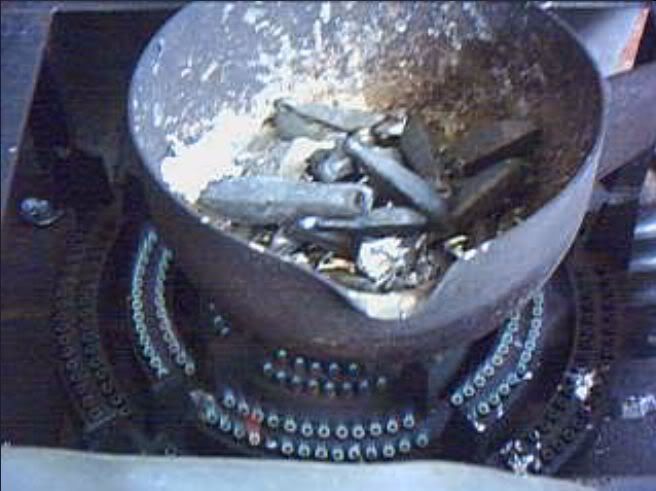I've just found this thread too. If anyone wants to build a really cheap foundry to see if they can cast (you can!) or just to do a few bits and pieces, you can do what I did.
I bought a large teracotta flowerpot and drilled a hole near the bottom of it to take 1m of 38mm steel tube for the tuyer (air blast pipe), which I angled to the side so the air would swirl around the bottom of the pot. The air came from an airless paint sprayer, but you could just about anyting handy. My first runs were with an old hairdryer. I fired it with BBQ coals and firelighters, and turned on the air 'blast' once the coals were well lit and starting to glow.
I made a crucible from a piece of 8" OD steel pipe with a welded on bottom and pouring V, with 1/4" steel bent and welded around the outside of top. I made up some scissor like tongs to grip onto the crucible under the 1/4" lip.
My first melt was a couple of pounds of pistons and soda cans, which melted beautifully within about 20mins. Yes, there was some dross, put I pulled this out with a steel rod / stiring stick. I did about 5 good pours from this foundry before the pot (which was bedded into some sand) cracked apart too much to continue to use. I'll just buy and drill a new pot when I'm ready to do some more casting.
Caution: be very respectful of molten aluminium, and have a sandbox around your foundry large enough so it can never get onto concrete (wet or dry). The water bonded into the concrete will instantly vapourise, sending chunks into the air with explosive force. How do I know? I used a ss pot as my first crucible, which pinholed causing all of my aluminium to run into the pot and down the tuyer. Of course, this catastrophically damaged the hair dryer I was using for the air, as well as the concrete. If your tuyer angles downward, you can join a near vertical pipe to it to supply the air, and just tape over the other end of the tuyer so the blast goes into the pot. The advantage of a tilted tuyer that if you get a spill in your foundry, the al will run out rather than ruining it. Not really an advantage for the easily replaceable flowerpot type foundry, however.
Gingery's "Backyard Foundry" is a great primer on building a more proper foundry than the one I describe above, and I highly recommend it. Of course, as mentioned above, there is lots of great information on the www.

